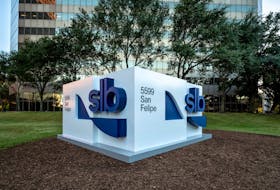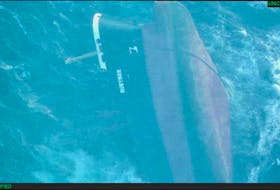While the City of St. John’s is looking at a $200-million project for a secondary wastewater treatment facility, smaller towns are also looking at costs reaching into the tens of millions for required additions.
Two technologists of 30 to 40 years of experience apiece — co-owners of BMSna, a Mount Pearl-based company selling locally manufactured wastewater treatment systems — say they believe it is possible to bring down the costs, with the right equipment and system designs.
RELATED STORIES:
Federal wastewater regulations far from N.L. reality
Wastewater upgrade needs $200 million and time
But while the pair see their operation as able to help, they also told The Telegram they expect many municipalities will not financially be in a position to act any time soon, even with extended lease periods.
According to Al Ducey, spending on wastewater has regularly been abandoned for other infrastructure priorities and operational expenses, particularly to achieve safe drinking water.
“There hasn’t been any money spent on sewage treatment,” he said.
“I think one of the underlying problems there is they don’t have the money to spend,” added Derek Ducey, pointing to a municipal infrastructure deficit.
In 2012, Hatch Mott Macdonald provided the provincial government with the results of a study on sewer outflows in Newfoundland and Labrador.
“Newfoundland and Labrador, like most coastal jurisdictions in Canada, can be described as having limited or no wastewater treatment infrastructure,” it stated.
Towns in Newfoundland and Labrador, already behind, gained little ground in the lead-in to the new wastewater regulations under the Fisheries Act. The rules were introduced in 2012 and took effect in 2015, and communities not in compliance are now operating under a grace period, being determined by Environment Canada.
The Duceys said wastewater just hasn’t been a priority, and it’s tough to imagine a massive investment in wastewater across the board any time soon.
“Right now the provincial government doesn’t have any money to spend,” Derek said. “And a lot of (the towns) are sitting on the fence waiting for our good daddy up in Ottawa to come and say, ‘We’re going to put $10 billion towards sewage treatment.’”
The pair have a good lay of the land. BMSna is short for Blivet Manufacturing Services North America. They work with the patent holder for their particular wastewater treatment system, who is based in Ireland, where, they suggested, more than 400 of his Blivet treatment units have been installed.
The units are designed to fit inside a shipping container, with guts made to treat the infeed from a sewer line serving anywhere from 12 to 400 homes. The largest units — all sizes can be manufactured here — cost about $200,000 installed.
Systems like the Blivet can serve communities without a large, central treatment plant, the Duceys said.
In some of these cases, a town’s chosen solution is for sewer lines to be interconnected and sewage pushed, through the use of lift stations, to a treatment point before the waste is expelled. They warned interconnection and lift stations can drive up costs. Their units can also go on individual lines and outfalls.
The company earned regulatory approval for sale of its systems in the province in 2002. Through their Irish contact, they ended up with a first contract to build and supply a treatment unit to the U.S. government for installation in Afghanistan.
Blivet units are installed at Vale’s new nickel processing plant at Long Harbour.
The company has municipal units also, with one operating the last nine years serving part of Marystown.
Marystown has further treatment requirements and is considering its options.
The Duceys said they have proposals in around the province. Their company’s treatment system was in the running under Torbay’s evaluation of wastewater options. The brothers said their costs in that case were driven up by a design whereby BMS Blivet units were imagined clustered together near the waterfront. The space requirement was enough that blasting would be required, driving up the estimate.
But whether with their company or others such as ABYDOZ with its reed bed system, or BioGreen in western Newfoundland, or an unknown, they suggested pursuing waste treatment should be considered a must, if only the money can be found.
(Notes: On Aug. 22, reference to Duceys as engineers corrected to reflect their appropriate title of technologists.
The BMSna website is currently down, in the process of being updated. But the Duceys can be reached during normal work hours by phone at 709-747-1444.)
While the City of St. John’s is looking at a $200-million project for a secondary wastewater treatment facility, smaller towns are also looking at costs reaching into the tens of millions for required additions.
Two technologists of 30 to 40 years of experience apiece — co-owners of BMSna, a Mount Pearl-based company selling locally manufactured wastewater treatment systems — say they believe it is possible to bring down the costs, with the right equipment and system designs.
RELATED STORIES:
Federal wastewater regulations far from N.L. reality
Wastewater upgrade needs $200 million and time
But while the pair see their operation as able to help, they also told The Telegram they expect many municipalities will not financially be in a position to act any time soon, even with extended lease periods.
According to Al Ducey, spending on wastewater has regularly been abandoned for other infrastructure priorities and operational expenses, particularly to achieve safe drinking water.
“There hasn’t been any money spent on sewage treatment,” he said.
“I think one of the underlying problems there is they don’t have the money to spend,” added Derek Ducey, pointing to a municipal infrastructure deficit.
In 2012, Hatch Mott Macdonald provided the provincial government with the results of a study on sewer outflows in Newfoundland and Labrador.
“Newfoundland and Labrador, like most coastal jurisdictions in Canada, can be described as having limited or no wastewater treatment infrastructure,” it stated.
Towns in Newfoundland and Labrador, already behind, gained little ground in the lead-in to the new wastewater regulations under the Fisheries Act. The rules were introduced in 2012 and took effect in 2015, and communities not in compliance are now operating under a grace period, being determined by Environment Canada.
The Duceys said wastewater just hasn’t been a priority, and it’s tough to imagine a massive investment in wastewater across the board any time soon.
“Right now the provincial government doesn’t have any money to spend,” Derek said. “And a lot of (the towns) are sitting on the fence waiting for our good daddy up in Ottawa to come and say, ‘We’re going to put $10 billion towards sewage treatment.’”
The pair have a good lay of the land. BMSna is short for Blivet Manufacturing Services North America. They work with the patent holder for their particular wastewater treatment system, who is based in Ireland, where, they suggested, more than 400 of his Blivet treatment units have been installed.
The units are designed to fit inside a shipping container, with guts made to treat the infeed from a sewer line serving anywhere from 12 to 400 homes. The largest units — all sizes can be manufactured here — cost about $200,000 installed.
Systems like the Blivet can serve communities without a large, central treatment plant, the Duceys said.
In some of these cases, a town’s chosen solution is for sewer lines to be interconnected and sewage pushed, through the use of lift stations, to a treatment point before the waste is expelled. They warned interconnection and lift stations can drive up costs. Their units can also go on individual lines and outfalls.
The company earned regulatory approval for sale of its systems in the province in 2002. Through their Irish contact, they ended up with a first contract to build and supply a treatment unit to the U.S. government for installation in Afghanistan.
Blivet units are installed at Vale’s new nickel processing plant at Long Harbour.
The company has municipal units also, with one operating the last nine years serving part of Marystown.
Marystown has further treatment requirements and is considering its options.
The Duceys said they have proposals in around the province. Their company’s treatment system was in the running under Torbay’s evaluation of wastewater options. The brothers said their costs in that case were driven up by a design whereby BMS Blivet units were imagined clustered together near the waterfront. The space requirement was enough that blasting would be required, driving up the estimate.
But whether with their company or others such as ABYDOZ with its reed bed system, or BioGreen in western Newfoundland, or an unknown, they suggested pursuing waste treatment should be considered a must, if only the money can be found.
(Notes: On Aug. 22, reference to Duceys as engineers corrected to reflect their appropriate title of technologists.
The BMSna website is currently down, in the process of being updated. But the Duceys can be reached during normal work hours by phone at 709-747-1444.)








